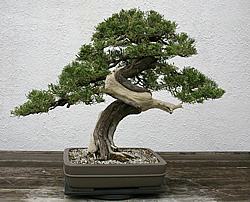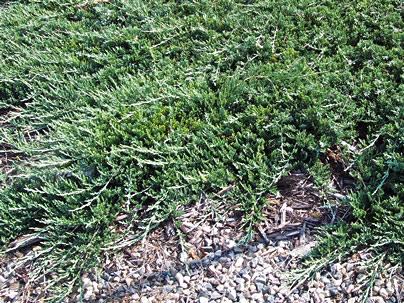The creeping juniper (Juniperus horizontalis) is a shrubby, dioecious, woody, and prostrate plant belonging to the conifer family. It stands out for its horizontal arrangement and bluish foliage with a fine texture. Its trunk is smooth and shiny, often twisted and branched. The branches are prostrate and trailing, spreading on the ground and cascading down slopes. The leaves are scale-like, tiny, aromatic, and densely arranged in opposing pairs along the branches.
The cones formed on female plants are small and globular, lacking ornamental significance and taking about two years to mature. There are many varieties of this creeping juniper, differing in size, more or less prostrate habit, and primarily in different color tones ranging from glaucous to lime green, including variegated options with cream-white patterns. Some of these cultivars include ‘Wiltonni,’ ‘Blue Chip,’ ‘Bar Harbor,’ ‘Blue Acres,’ ‘Emerald Spreader,’ ‘Glacier,’ ‘Green Acres,’ and ‘Golden Carpet.’

In landscaping, the creeping juniper stands out as a highly sculptural ground cover that pairs well with other conifers and in rocky gardens, complementing the texture of flowering plants and providing a neutral background of color. It contributes to adding naturalness to stone arrangements, connecting and softening shapes with its bluish branches.
This juniper is also used for sandy areas in coastal gardens and slopes, where it is useful in erosion control. It is also a fascinating option for bonsai art due to its dense and naturally small leaves, as well as its low and horizontal growth.
It should be grown in full sun in well-draining soil enriched with organic matter and irrigated regularly in the first year of establishment. Once well-established in the soil, it becomes a drought-resistant plant. However, the creeping juniper does not tolerate wet or waterlogged soils. It adapts to a wide range of climates, thriving in both cold and hot conditions, as long as they are not too extreme.
In cold winters, the creeping juniper tends to acquire a brownish hue on its leaves. It tolerates pruning for containment or shaping. It propagates by seeds, but more commonly by cutting from the tips to preserve the cultivar’s characteristics.

